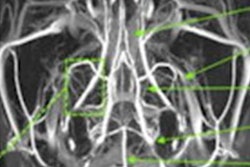
A new type of MRI contrast technology based on superparamagnetic iron oxide nanoparticles (SPIONs) could improve the image quality of low-field MRI scanners, making it more comparable to that of expensive high-field units, researchers reported in a study published July 17 in Science Advances.
A typical MRI scanner can cost up to $3 million or more, typically due to the superconducting magnet; in addition, the stronger the magnetic field, the more expensive the machine. However, portable low-field MRI scanners that operate at 0.064 tesla cost between $50,000 and $100,000, according to a statement from Massachusetts General Hospital (MGH) about the research.
The problem is that low-field images aren't great, and radiologists frequently want to use contrast agents to improve the images. But to use contrast agents at the 0.064-tesla field strength, doctors would have to inject 1,000 times more than the amount approved by the U.S. Food and Drug Administration (FDA).
A solution to this problem was proposed by Matthew Rosen, PhD, director of the Low-field MRI and Hyperpolarized Media Laboratory at MGH, along with physicists David Waddington, PhD, the lead author of the Science Advances article, and Zdenka Kuncic, PhD, both from the University of Sydney. They proposed using superparamagnetic iron oxide nanoparticles, which are 3,000 times more magnetic than conventional contrast agents.
The researchers scanned healthy lab rats using Rosen's homemade ultralow-field MRI scanner, then injected them with SPIONs and rescanned. A comparison of the images before and after injection showed a striking difference with the kidney, liver, and other organs glowing brightly following the administration of SPIONs.
SPIONs are not FDA-approved for use as a contrast agent in humans, but doctors can use them off-label with low-field MRI, according to the researchers.
The combination of portable low-field MRI scanners and SPIONs can expand the use of MRI in emergency rooms, intensive care units, and doctors' offices for routine screenings, Rosen and Waddington noted.
Waddington and Kuncic are also investigating the use of specially coated SPIONs that could detect malignant tumors when used in conjunction with MRI.



















